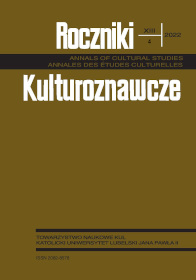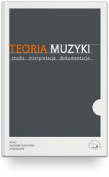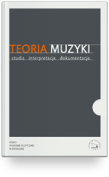Author(s): Vita Gruodytė / Language(s): English
Issue: 18/19/2021
Being the least constrained form of expression in the arts, the happening turned outto be the form of Western culture that best corresponded to the prevailing cultural andpolitical climate at the time of the restoration of Lithuanian independence. It perfectlyreflected the intentions and technical capabilities of the new generation of creators: thegenre itself inspired eclecticism, interdisciplinarity, a simplicity of music language, thesearch for new sounds, links with other fields of art, and an active relationship with theenvironment and the audience. Improvisation, spontaneity, collective action, anonymity,a hybridisation of styles and a variety of tools became the new means of artisticexpression.The first independent festivals, which began to be launched in 1985, offered the mostflexible form of creative expression in the arts. At the time it was not so expensive, wasthe least dependent on political censorship, which still formally continued to function,and also most accurately reflected the spirit of the time. It was also a collective, oftenanonymous enterprise that relied on improvisation and a socially and politically engagedapproach to creativity, which thus came closest to the spirit of Fluxus.After fifty years of political and cultural occupation, it was more important than ever forLithuanian artists to speak freely and without restrictions in the “international” languageof art and to again feel part of modern art. The idea of art as everyday life resonated withthe philosophy of John Cage, and the idea of art as action, as an engaged commentatoron social change, reflected the ideas of George Maciunas (Jurgis Mačiūnas).The political engagement of artists observed in the 1990s was specifically based on thetools of Fluxus: the tone of the festivals was playful and utilised caricature, which, whenset against the background of the ideology underpinning Soviet art, offered a completelynew, political aspect of art, , which, however, never transformed into purely politicalart. The various actions of artists were often limited to making social insights or simplyhighlighted some political aspect of the period.The entire Lithuanian music scene of the early 21st Century went through a brief periodof happenings, actions, and performances. If we were to briefly describe the evolutionof action-based contemporary Lithuanian music, we would say that, having begun asa “disorganised” form of art that disrupted conventional / stereotypical thinking andsought to ignore or shock audiences, it later acquired forms of “organised” artistic activityand sought new meanings and audience impact tools. The Lithuanian brand of Fluxus does not seem to have lost its Maciunas-charactercontent-wise. It was, and still is, a collective phenomenon, based on pragmaticincentives and dealing with quite favourable circumstances: in the nineties, it was ableto unite a group of slightly boisterous artists, while today it is able to inspire forms ofperformative and socially engaged art, and it undoubtedly has had an impact on generaltrends in Lithuanian art.
More...



